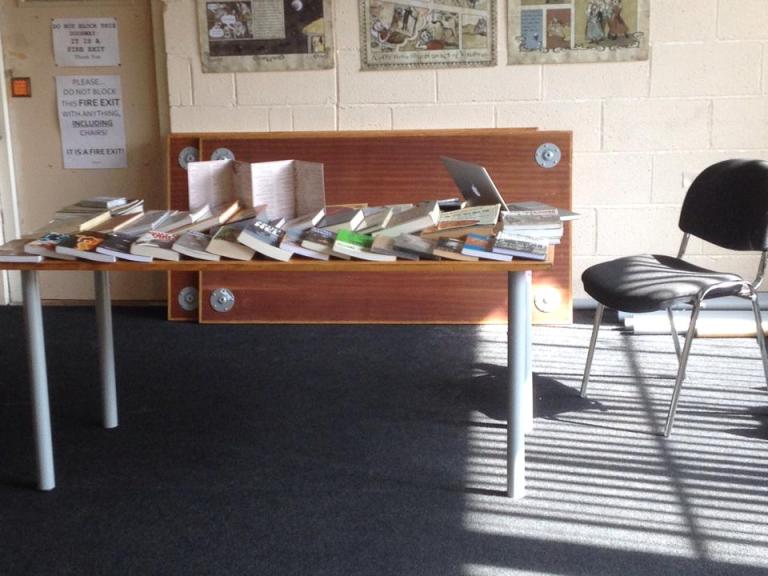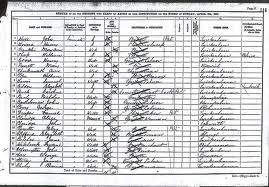For the rest of this month, I’m going to be working as a researcher on Hope Street Limited’s community project Spring-Heeled Jack In Everton. It’s a bit daunting – I’ve done research projects before, but nothing quite on this scale, where my work is essentially responsible for the basis of the project. Parts of my brain are screaming slightly.
The purpose of this blog is to keep a log of my research discoveries and methods, and of the results of my work – it’s perceived as part of the project’s legacy, which is another terrifying prospect. Personally, I’m also hoping that the process of sitting down and writing about my experiences will help me draw together plot-lines and spot coincidences and patterns in what I’ve found. I’m becoming increasingly aware that my role is almost as much that of a dramaturg as a researcher – a can of worms I intend to open further in short order.
I’ve been doing drips and drops of research over the past few weeks, with the help of my professional mentor Seamus Rush, and have somehow managed to amass a fair bit of information. Most of it is about Liverpool at the time of Spring-Heeled Jack’s sightings there during the last twenty years of Victoria’s reign – like most urban legends, hard facts about Spring-Heeled Jack himself are notoriously thin on the ground. Nevertheless, Tessa Buddle of the Suitcase Ensemble, the lead artists on the project, asked me to put together a ‘fact’-sheet that can be taken into the community workshops, and I figured this would be a good way to start off this blog – the first, and last, time I’ll discuss Spring-Heeled Jack as fact.
So:
*Spring-Heeled Jack was first seen in London in 1837, and terrorised areas of England throughout the Victorian period
*His name comes from his ability to leap astonishingly high – far higher than any human
*He was reported to attack young ladies, especially servant girls, and shred their clothes
*Other reports mention him having glowing red eyes, claws, breathing fire and having a strange light emanate from his chest
*Jack was seen in various towns across Britain during the Victorian era, including *Sheffield, Warrington, Northamptonshire, Aldershot and Lincoln
*In 1888, he was reportedly seen leaping off the roof of High Park Street Reservoir in Toxteth
*Jack was said to have terrorised the area around All Saints’ Church and the Bloody Acre in Childwall not long after
*Then, later that year, he appeared on the spire of St Francis Xavier’s Church in Everton, before leaping off and vanishing
*In 1904 Jack was once again reported to have appeared in William Henry Street, running across the rooftops and evading the police in what is considered his last proper sighting in England
*In the intervening years, Spring-Heeled Jack has become a part of the fabric of English horror and folklore, appearing in novels, comics and films
*He’s mostly remembered as a bogeyman and a way of making unruly children behave *Theories abound as to what he really was – a spaceman from another world, a monster from Hell, a mischievous aristocrat or inventor…
That may not be the list as it ends up, as Tessa may want me to change it – such is what I’m here for, after all!
I also threw together a few quotes from people I interviewed at Out Of The Blue festival in Everton last month, chosen because they illustrated important or commonly-held beliefs about Jack (or because they entertained me):
*“He had springs on his heels and he’d go jumping over walls scaring kids”
*“He used to leap out and frighten women – don’t think he murdered anyone though”
*“It’s a kid’s story – not to be taken seriously”
*“There was a rumour he was ‘the Devil in disguise’”
*“My dad used to use him as a way if he didn’t want me to go down certain streets, he’d tell me Spring Heeled Jack’d get me”
*“He was kind of the first free-runner”
These also illustrate the main focus of this project – it’s not the ‘facts’ about Spring-Heeled Jack that matter, so much as the stories we tell about him. If this project is about anything, it’s about storytelling.
My aim is to update this blog once a day for the entirety of August. Keep your eyes peeled, keep vigilant, keep watching the skies.
Ladies and gentlemen, Jack is back.





